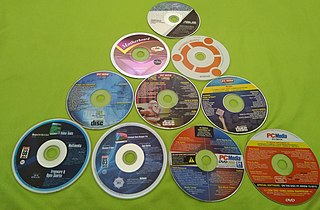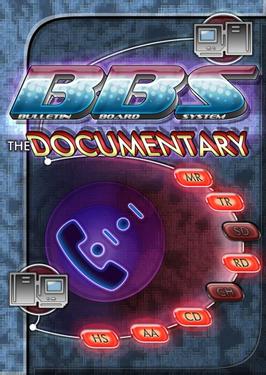Crack frequently refers to:
Contents
- Crack, a fracture in a body
- Crack, a fracture (geology) in a rock
- Crack, short for crack cocaine
Crack(s) or The Crack may also refer to:
Crack frequently refers to:
Crack(s) or The Crack may also refer to:
Cracking may refer to:

A hacker is a person skilled in information technology who achieves goals by non-standard means. The term has become associated in popular culture with a security hacker – someone with knowledge of bugs or exploits to break into computer systems and access data which would otherwise be inaccessible to them. In a positive connotation, though, hacking can also be utilized by legitimate figures in legal situations. For example, law enforcement agencies sometimes use hacking techniques to collect evidence on criminals and other malicious actors. This could include using anonymity tools to mask their identities online and pose as criminals.
The hacker ethic is a philosophy and set of moral values within hacker culture. Practitioners believe that sharing information and data with others is an ethical imperative. The hacker ethic is related to the concept of freedom of information, as well as the political theories of anti-authoritarianism, anarchism, and libertarianism.
Integration may refer to:
Software cracking is an act of removing copy protection from a software. Copy protection can be removed by applying a specific crack. A crack can mean any tool that enables breaking software protection, a stolen product key, or guessed password. Cracking software generally involves circumventing licensing and usage restrictions on commercial software by illegal methods. These methods can include modifying code directly through disassembling and bit editing, sharing stolen product keys, or developing software to generate activation keys. Examples of cracks are: applying a patch or by creating reverse-engineered serial number generators known as keygens, thus bypassing software registration and payments or converting a trial/demo version of the software into fully-functioning software without paying for it. Software cracking contributes to the rise of online piracy where pirated software is distributed to end-users through filesharing sites like BitTorrent, One click hosting (OCH), or via Usenet downloads, or by downloading bundles of the original software with cracks or keygens.
Environment most often refers to:
Originally, the word computing was synonymous with counting and calculating, and the science and technology of mathematical calculations. Today, "computing" means using computers and other computing machines. It includes their operation and usage, the electrical processes carried out within the computing hardware itself, and the theoretical concepts governing them.
The hacker culture is a subculture of individuals who enjoy—often in collective effort—the intellectual challenge of creatively overcoming the limitations of software systems or electronic hardware, to achieve novel and clever outcomes. The act of engaging in activities in a spirit of playfulness and exploration is termed hacking. However, the defining characteristic of a hacker is not the activities performed themselves, but how it is done and whether it is exciting and meaningful. Activities of playful cleverness can be said to have "hack value" and therefore the term "hacks" came about, with early examples including pranks at MIT done by students to demonstrate their technical aptitude and cleverness. The hacker culture originally emerged in academia in the 1960s around the Massachusetts Institute of Technology (MIT)'s Tech Model Railroad Club (TMRC) and MIT Artificial Intelligence Laboratory. Hacking originally involved entering restricted areas in a clever way without causing any major damage. Some famous hacks at the Massachusetts Institute of Technology were placing of a campus police cruiser on the roof of the Great Dome and converting the Great Dome into R2-D2.
Wardialing is a technique to automatically scan a list of telephone numbers, usually dialing every number in a local area code to search for modems, computers, bulletin board systems and fax machines. Hackers use the resulting lists for various purposes: hobbyists for exploration, and crackers—malicious hackers who specialize in breaching computer security—for guessing user accounts, or locating modems that might provide an entry-point into computer or other electronic systems. It may also be used by security personnel, for example, to detect unauthorized devices, such as modems or faxes, on a company's telephone network.
Incompatible Timesharing System (ITS) is a time-sharing operating system developed principally by the MIT Artificial Intelligence Laboratory, with help from Project MAC. The name is the jocular complement of the MIT Compatible Time-Sharing System (CTSS).
In cryptanalysis and computer security, password cracking is the process of guessing passwords protecting a computer system. A common approach is to repeatedly try guesses for the password and to check them against an available cryptographic hash of the password. Another type of approach is password spraying, which is often automated and occurs slowly over time in order to remain undetected, using a list of common passwords.
The Security Account Manager (SAM) is a database file in Windows XP, Windows Vista, Windows 7, 8.1, 10 and 11 that stores users' passwords. It can be used to authenticate local and remote users. Beginning with Windows 2000 SP4, Active Directory authenticates remote users. SAM uses cryptographic measures to prevent unauthenticated users accessing the system.
Internet security is a branch of computer security. It encompasses the Internet, browser security, web site security, and network security as it applies to other applications or operating systems as a whole. Its objective is to establish rules and measures to use against attacks over the Internet. The Internet is an inherently insecure channel for information exchange, with high risk of intrusion or fraud, such as phishing, online viruses, trojans, ransomware and worms.

Covermount is the name given to storage media or other products packaged as part of a magazine or newspaper. The name comes from the method of packaging; the media or product is placed in a transparent plastic sleeve and mounted on the cover of the magazine with adhesive tape or glue.

BBS: The Documentary is a 3-disc, 8-episode documentary about the subculture born from the creation of the bulletin board system (BBS) filmed by computer historian Jason Scott of textfiles.com.
A security hacker is someone who explores methods for breaching defenses and exploiting weaknesses in a computer system or network. Hackers may be motivated by a multitude of reasons, such as profit, protest, information gathering, challenge, recreation, or evaluation of a system weaknesses to assist in formulating defenses against potential hackers.

Password strength is a measure of the effectiveness of a password against guessing or brute-force attacks. In its usual form, it estimates how many trials an attacker who does not have direct access to the password would need, on average, to guess it correctly. The strength of a password is a function of length, complexity, and unpredictability.
Cheating in video games involves a video game player using various methods to create an advantage beyond normal gameplay, usually in order to make the game easier. Cheats may be activated from within the game itself, or created by third-party software or hardware. They can also be realized by exploiting software bugs; this may or may not be considered cheating based on whether the bug is considered common knowledge.
Cracker, crackers or The Crackers may refer to:
An anti-keylogger is a type of software specifically designed for the detection of keystroke logger software; often, such software will also incorporate the ability to delete or at least immobilize hidden keystroke logger software on a computer. In comparison to most anti-virus or anti-spyware software, the primary difference is that an anti-keylogger does not make a distinction between a legitimate keystroke-logging program and an illegitimate keystroke-logging program ; all keystroke-logging programs are flagged and optionally removed, whether they appear to be legitimate keystroke-logging software or not. The anti-keylogger is efficient in managing malicious users. It can detect the keyloggers and terminate them from the system.